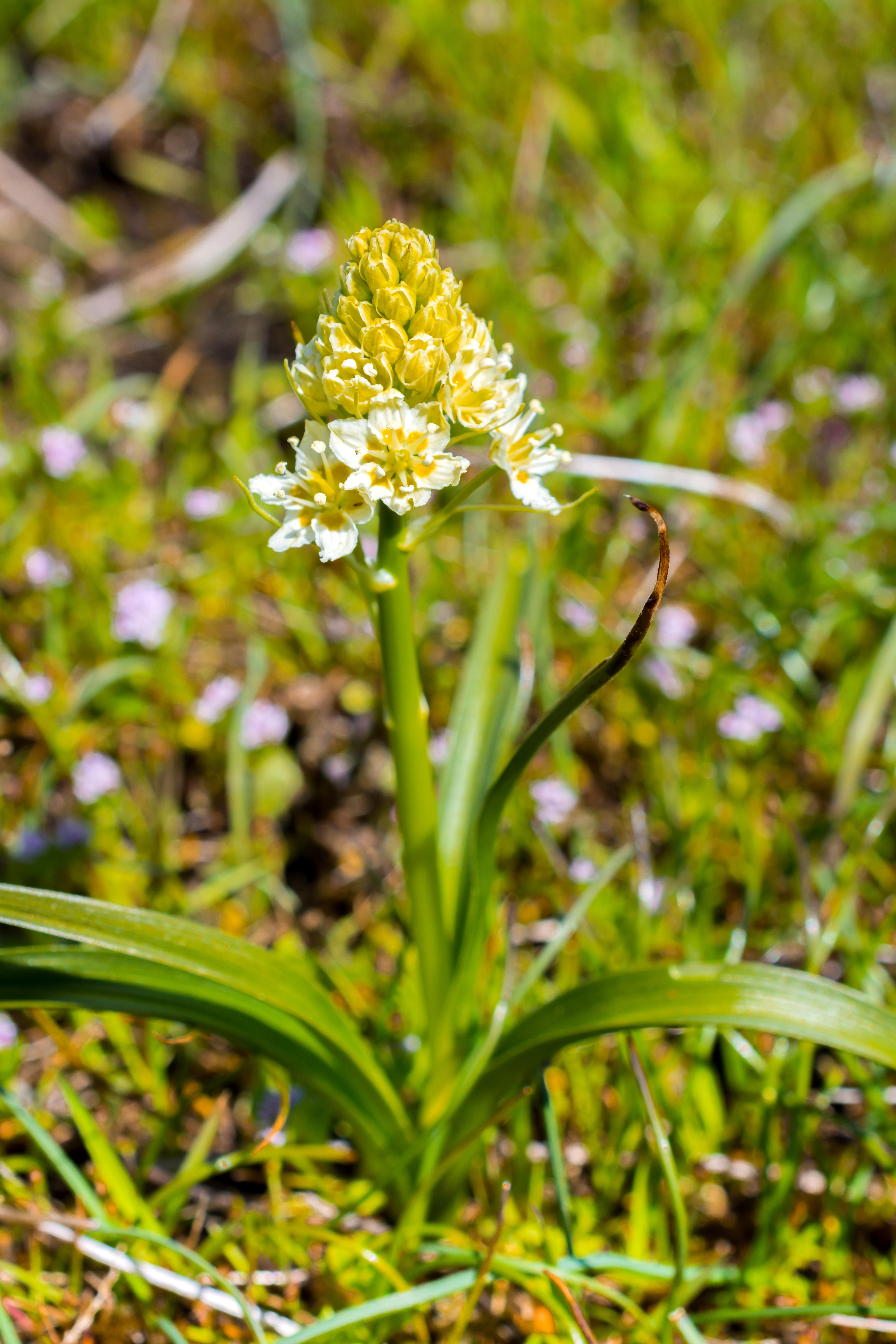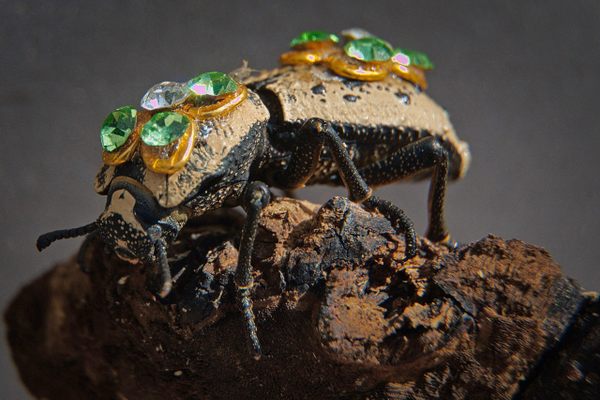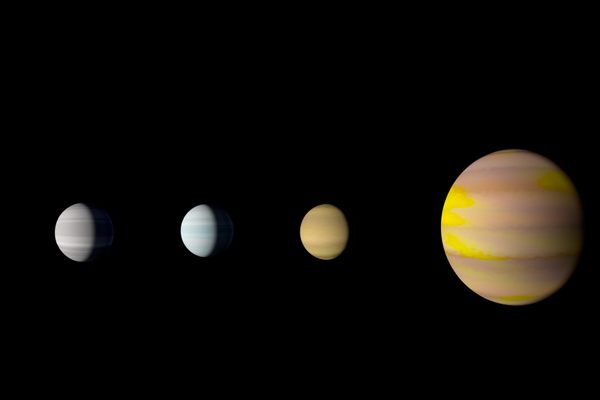Would You Trust AI to Help You Forage?
Before you buy a plant field guide, make sure it wasn’t written by a computer. No, seriously.
Saturated images of mushrooms and wildflowers stand out against a bright-green book cover. The title is wordy, but enticing: The Forager’s Harvest Bible: The Ultimate Guide to Wild Food and Edible Plants Foraging, Identification and Harvesting. In his headshot, the author, Hector Lawson, smiles sternly but gently. His biography tells us that he was “raised amidst nature, on the outskirts of a bustling city,” though it doesn’t say where. Nor does it list Lawson’s other publications or his professional or educational background; there are just a few bland paragraphs about his “desire to reconnect with nature.” Googling “Hector Lawson” with “foraging,” or doing a reverse image search of the headshot, turns up nothing except the book.
This is because Hector Lawson, alleged foraging expert, likely does not exist. Many in the foraging community suspect that his name and face, like the contents of The Forager’s Harvest Bible, were generated by AI.
In the past year, online sellers like Amazon have been inundated with AI-generated books across various genres. Click-farming bots and fake reviews can even drive these books onto Amazon’s best-seller lists. One estimate of the Teen & Young Adult Contemporary Romance category on Amazon found only 19 human-created books in the top 100 sellers. As many of these books are self-published and easily replicable, with few details that could lead you to the author, estimating the exact number of AI-generated titles is difficult. But foraging field guides are the latest genre to be targeted by this growing trend.
Available both as e-books and in print, these dubious foraging guides are often undeveloped, with brief chapters, vague and repetitive descriptions, and no photographs or citations. Sometimes, they plagiarize from existing guides. Other times, they reference domesticated species like broccoli, or give advice no experienced forager would give, like suggesting tasting a mushroom to help with identification.

It’s easy to see the potential danger of a computerized prompt presented as an authority on safely consuming wild plants. The bio of the author of The Edible Wild Plants Bible, another suspicious guide, even promises that he “can easily distinguish between edible and poisonous varieties.” One doesn’t have to look far for examples of poisonous wild plants and fungi that can be confused with edible ones. Moonseed resembles grapes. Hemlock is a similar-looking cousin of carrot and parsnip. A plant nicknamed “death camas” looks like wild onion.
“This could lead to people dying,” warns “Foraging Chef” and foraging guide author Alan Bergo. Bergo learned of AI foraging guides a few months ago from a post shared by John Kallas, whom Bergo calls “one of the OGs in the foraging world.” Bergo didn’t think much of it at first. Then he noticed that Sam Thayer, another legendary figure in foraging, had also posted about the issue. Bergo regularly recommends Thayer’s guidebooks, such as The Forager’s Harvest. So when Bergo received a new guide by a first-time author, he was alarmed to see that it “had one of these fictitious guides listed [as a source] above Sam Thayer’s guide, which is the one they’re basically trying to steal the limelight from. This is when I got ticked off, and I was like, ‘No, we’ve got to share this now.’”
Bergo and other prominent figures in the online foraging community like Alexis Nikole have since shared concern over AI-generated guides with their audience. “I’m so worried that someone who doesn’t know better is going to legitimately poison themselves because of this,” Nikole said in a video she posted on TikTok. In a small community that cares deeply about safety and accuracy, vetting new “experts” is important. “The most that we’ve encountered up to this point is people that just basically don’t know what they’re talking about,” says Bergo. He brings up Tales From a Forager’s Kitchen, a recipe book by an amateur forager that was recalled in 2018 because it used potentially unsafe wild ingredients like raw morel mushrooms, which are toxic until cooked.
When vetting a foraging guide, Bergo recommends using Google to find out more about the author and see whether they have previous writing credits or experience with foraging education. “Google has a higher standard of proof than Amazon,” he says, and any legitimate foraging expert will have some kind of online track record. Bergo also advises aspiring foragers to beware of books that promise to pack the content of several books into one slim volume. The Forager’s Harvest Bible by Hector Lawson boasts “six books in one” on the cover, despite being only 136 pages long. Another red flag is titles similar to those of established sources, like The Forager’s Harvest Bible versus Sam Thayer’s The Forager’s Harvest. Many AI books also have nearly identical, generic-looking covers.

While it’s not clear exactly where these fake guides come from, the truth may be more complicated than grifters trying to scam unsuspecting readers. YouTube documentarian Dan Olson’s 2022 video Contrepreneurs investigates the business-coaching practice of twin brothers Christian and Rasmus Mikkelsen. The Mikkelsens sell a course that promises to teach you how to earn passive income by commissioning books and publishing them online. In their original model, you choose a best-selling topic, pay a low rate to a ghostwriter, and pocket the sales earnings.
Olson makes it clear that the Mikkelsens are far from the only people charging others to learn how to produce what the brothers call “Done For You” books. And while the Mikkelsens started their course in 2016, before chatGPT and other public AI tools, they and other business coaches who follow a similar model have since replaced underpaid contractors with AI. These slapdash AI books often earn much less than coaches claim they will, but for the coaches, it doesn’t matter. The people who pay for the publishing course are the primary targets of a money-making scheme, with readers just collateral damage.
Olson describes the Mikkelsens as focusing on “nonfiction topics with very low standards of evidence, or ones favored by people who are hostile toward science.” While other AI books may pass under the radar, perhaps we’re only hearing about AI foraging guides because someone made the mistake of trying to imitate a genre that does have a high standard of evidence, and whose writers are quick to call out misinformation.
AI foraging guides undermine the work of real foraging experts, but they also perpetuate a paradigm of who is regarded as a reliable authority on wild plants. It’s worth noting that these suspected artificial foraging authors tend to be depicted as older white men. And instead of elaborating on or reevaluating existing guidebooks, some AI foraging guides copy directly from them, an issue which Bergo notes “has been happening with field guides, basically, since field guides were begun.”

But Bergo does see a place for AI in foraging. He points out that apps like iNaturalist use AI to help with plant identification in the field but are rooted in the work of human experts. Bergo believes foragers should see AI-based apps as just one implement in their toolkit. “You use the tools in combination with each other,” he says, “and when used with discretion and care, they can be extremely helpful.” iNaturalist connects users through a global network and compiles user data to create a map of species sightings, valuable for foragers trying to determine if a species is common enough in their area to be harvested.
The same technology that allows iNaturalist to identify a plant from an image has also been applied to plant science, especially phenology, the study of recurring processes like fruiting and flowering. Phenology can tell us how climate change is impacting plant growth cycles, and by extension, other organisms that depend on plants for food and shelter, including humans. A 2020 paper published by the Botanical Society of America named the automated recognition of plant structures via machine learning as “a key goal in current phenological research.” In 2021, Austrian scientists developed an AI program that identifies plant images at a rate of 100,000 per day, equivalent to an estimated eight years of full-time human labor.
When it comes to interactions between plants and AI, “nothing is black and white,” says Bergo. Inaccurate AI foraging guides represent the worst-case scenario, a use of AI that is cynical and careless. At the same time, other applications of AI can augment the human study of wild plants, helping us learn from and safeguard them. It’s a powerful reminder of the revolutionary potential of technology, and a reminder that even with such technology, we should always check the credibility of our sources.
Gastro Obscura covers the world’s most wondrous food and drink.
Sign up for our regular newsletter.



















Follow us on Twitter to get the latest on the world's hidden wonders.
Like us on Facebook to get the latest on the world's hidden wonders.
Follow us on Twitter Like us on Facebook